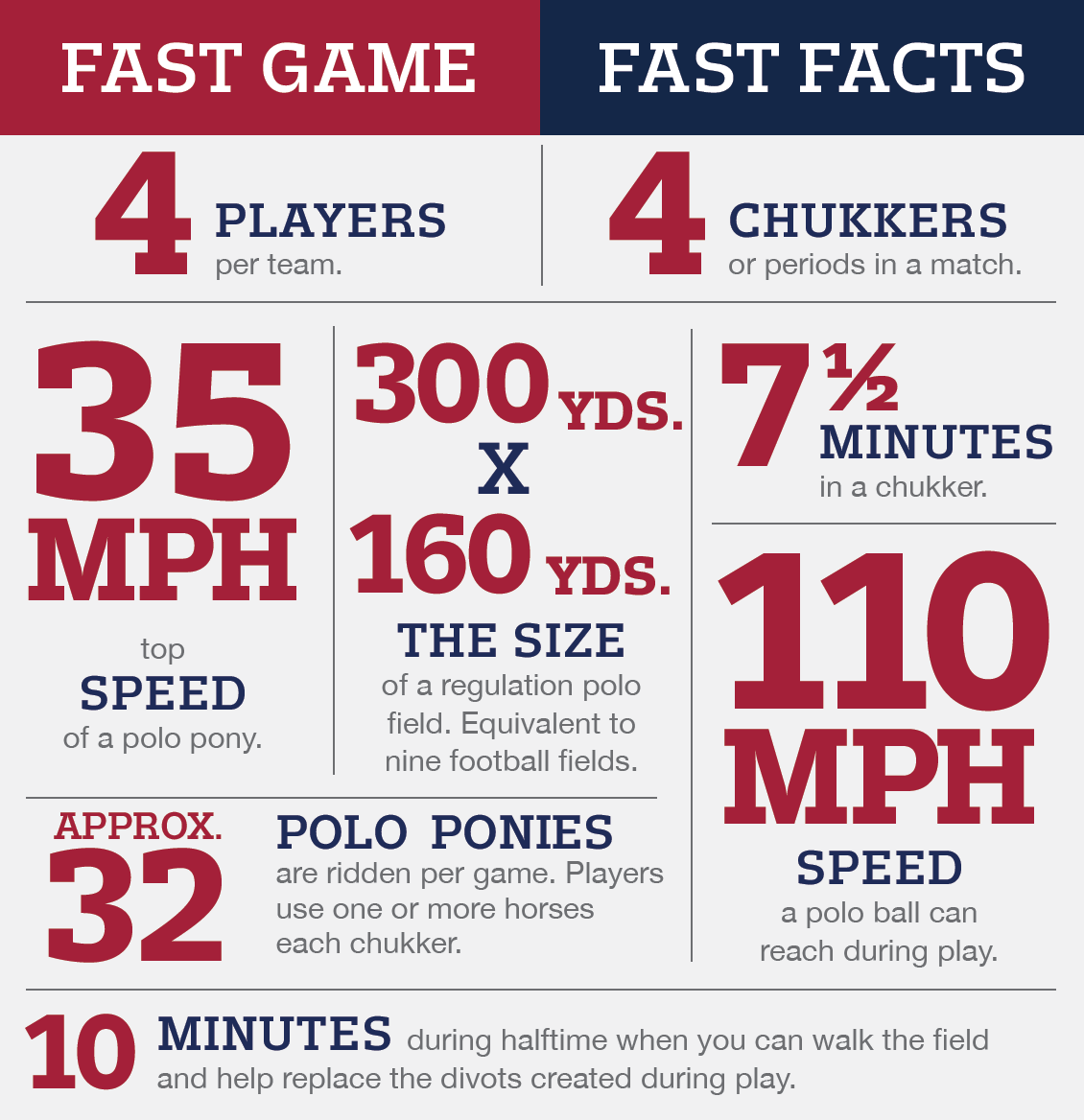A Spectator's Guide to the Game of Polo
Overview
A sport unlike any other, polo showcases the powerful bond between a player and his or her equine partner. As one of the oldest team sports, polo is an exhilarating combination of horsepower, athleticism and control. Competing on a 300- by 160-yard grass field, players score by driving the ball into the opposing team’s goal using a bamboo mallet while riding at speeds of up to 35 mph.
Play
Plays are based on the “line of the ball,” an imaginary line created by the ball as it travels down the field. It represents a right-of-way for the last player striking the ball, and is the basis for most fouls in the game. Players may try to hook or “ride off ” their opponents in an effort to gain control of the ball.
Teams and Handicaps
A team consists of four mounted players and can be a mix of both men and women. Players are handicapped on a scale of -2 to 10, as determined by a player’s horsemanship, hitting ability, quality of horses, team play and game sense. The team handicap is the sum of its players’ total handicaps. A player’s jersey number reflects the position they play, with each number indicating a different objective.
The Horses
Although the real stars of the game are called polo “ponies, the term is just a tradition; an old rule limiting their height was dropped in 1919. Today’s players prefer horses with a Thoroughbred’s speed and stamina in their bloodlines. These four-legged athletes can run two miles in a single chukker: seven-and-a-half minutes of starting, stopping, swapping from offense to defense in a single stride. The mane is shaved and the tail wrapped so that they are not entangled in reins, mallets and other equipment, especially when the horses are bumping shoulder to shoulder at 35 mph.
Equipment
Players wear a safety helmet, knee-high boots, white pants, jersey and carry a polo mallet held in the right hand during play. The mallet is made of a bamboo shaft measuring between 48 to 54 inches in length with a wooden head. The game ball is made of hard plastic and is comparable in size to a baseball.
The Officials
During games, two mounted umpires officiate on the field while a referee assists from the sidelines. The rules of polo are designed to allow both the players and their equine partners the opportunity to maximize their athletic skills in a safe and fair environment.
Halftime
As a sport steeped in tradition, the “Divot Stomp” is one of polo’s oldest practices. At halftime, spectators are invited to walk onto the field to socialize and replace the divots that are created by the horses’ hooves during play. The ten-minute break in the middle of the game gives players and horses a chance to rest and regroup.
Don't miss one of the best weekend events in Denver!









